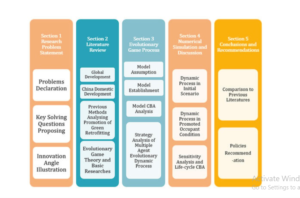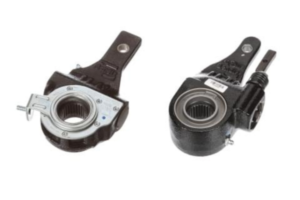Automatic slack adjusters reduce brake maintenance and improve vehicle safety but can have environmental impacts due to increased manufacturing processes. These components, essential for vehicle braking systems, contribute to resource consumption and potential pollutant emissions.
Brake systems are critical for vehicle safety, and automatic slack adjusters play a key role in modern braking mechanisms. These devices automatically maintain the proper distance between the brake shoes and drums, ensuring consistent brake performance and reducing manual adjustments.
Optimizing brake efficiency, they help to prevent accidents and enhance the lifespan of braking components, which in turn can reduce waste and the frequency of replacements. Despite their benefits, the production of automatic slack adjusters involves the use of metals and other materials, which require energy-intensive processes to extract, process, and manufacture. This surge in production activity contributes to higher resource usage and the release of industrial pollutants, including greenhouse gases. Therefore, while automatic slack adjusters present clear advantages in vehicle operation, their environmental impact reflects a trade-off between improved road safety and ecological considerations. Understanding this balance is essential in pursuing sustainable transportation solutions.
Benefits Of Automatic Slack Adjusters
Understanding the benefits of automatic slack adjusters is crucial for eco-conscious fleet management. Environmental protection couples with efficiency enhancements when deploying these devices. Let’s delve into the performance and financial perks they offer, highlighting their positive environmental impact.
Improved Safety
Automatic slack adjusters contribute significantly to vehicle safety. Consistent brake performance prevents accidents. This reliability is key for safe transport operations.
- Stable braking distance
- Minimized brake system wear
- Lower risk of brake-related failures
Enhanced safety leads to fewer on-road incidents, promoting a safer environment.
Reduced Maintenance Costs
Maintenance expenses drop when using automatic slack adjusters. These components self-adjust to maintain ideal brake function.
- Slash downtime needed for brake adjustments
- Extend lifespan of brake components
- Reduce frequency of part replacement
The longevity of brakes translates to lowered resource consumption and waste generation.

Environmental Impact Of Automatic Slack Adjusters
Trucks play a big role in moving things we use every day. They need to be in good shape to be safe and clean for the planet. Automatic slack adjusters (ASAs) help big trucks stop smoothly and evenly. This is good for the truck and for the air we breathe. Let’s explore how these adjusters make a big difference.
Reduced Brake Wear And Tear
Brakes that are in good shape last longer. ASAs keep breaks working right without needing a lot of fixes. This means less stuff gets thrown away. Here is how:
- Less Dust: Good brakes make less brake dust.
- Less Noise: They also make less noise and work better.
- Longer Life: When brakes wear evenly, they last longer.
Reduced Air Leaks
ASAs help save air in the brake system. This is important because:
- Fewer leaks mean the air compressor uses less energy.
- Trucks can go longer without needing repairs for leaks.
- A tight air system is better for the environment.
Reduced Fuel Consumption
When trucks stop easier, they use less fuel. Here’s how ASAs help:
Without ASA | With ASA |
More gas for each stop | Less gas for each stop |
Uneven brakes use more power | Even brakes save power |
Better fuel use helps keep the air clean.
Challenges Of Using Automatic Slack Adjusters
For many fleets, automatic slack adjusters represent a shift towards safety and efficiency. Yet, there are hurdles to consider. This section dives into the specific challenges operators face with the adoption of automatic slack adjusters.
Cost Of Installation
Initial investment in automatic slack adjusters can be significant. Here’s a quick look at the financial implications:
- Higher upfront costs compared to manual versions.
- Additional expenses linked to vehicle retrofitting or upgrading.
- Potential for return on investment over time due to fewer maintenance needs.
Training Requirements
Proper use of automatic slack adjusters requires expert knowledge and training. Consider these training essentials:
- Understanding the functioning and mechanics of the devices.
- Learning inspection protocols to ensure ongoing reliability.
- Developing a competence in troubleshooting common issues.
Compatibility Issues
Not all vehicles are ready for the switch to automatic slack adjusters. Fleet managers must assess:
Compatibility Factor | Details |
Brake system type | Is it designed for automatic adjustment? |
Age of the fleet | Older models may not support modern adjusters. |
Variety of models | Mixed fleets might need custom solutions. |
Resolving these compatibility challenges requires careful assessment and potentially custom engineering solutions.
Regulatory Framework Governing Slack Adjusters
Trucks and buses use automatic slack adjusters to ensure brakes are not too loose or tight. Legislation controls their use. Rules aim for safety on roads. We will explore how different regions regulate slack adjusters.
Federal Motor Carrier Safety Regulations
The FMCSA sets rules for commercial vehicles in the U.S. Brakes must adjust automatically. This is vital for road safety. The regulations require:
- Regular inspections: Trucks and buses undergo checks to spot brake issues.
- Maintenance records: Companies keep details of brake adjustments.
- Correct use: Trained teams must fit and repair the components.
Canadian Vehicle Safety Standards
Canada mandates proper brake function in vehicles. These standards match U.S. rules. Here’s what Canada requires:
- Test procedures: Measures to assess brake performance.
- Design standards: Slack adjusters must meet design guidelines.
- Adjustment limits: Brakes must stay within certain tightness.
European Union Regulations
The EU takes a proactive stance on vehicle safety. Slack adjuster use falls under these laws. The EU demands:
Requirement | Description |
Compatibility: | Parts must work with various brake systems. |
Eco-friendly materials: | Components must not harm the environment. |
Performance checks: | Adjusters undergo tests for durability. |
Case Studies Of Using Automatic Slack Adjusters
Brakes are vital for vehicle safety. Automatic slack adjusters (ASAs) play a crucial role. They adjust the brakes in vehicles like trucks and buses as they wear down. Using ASAs has a positive environmental impact. Studies show ASAs extend brake life and reduce waste. Less frequent replacements mean fewer parts end up in landfills. There are fewer trips to the mechanic. This means less fuel usage, which leads to lower emissions.
Commercial Fleets
Commercial fleets see big benefits from ASAs.
- Trucks brake evenly
- Reduced downtime
- Enhanced fuel efficiency
One large shipping company switched to ASAs. They saved on maintenance costs. They also noticed their trucks used less fuel.
Public Transit Agencies
Public transit agencies usage of ASAs leads to cleaner cities.
- Less brake dust
- Better air quality
- Smoother rides for passengers
A city bus fleet found that ASAs cut their repair time. They also improved the city’s air by reducing harmful particles from brakes.
Railway Operators
Railway operators influence the environment too. ASAs have helped here.
Before ASA | After ASA |
More metal waste | Less waste production |
High maintenance time | Quicker check-ups |
One rail company cut down on metal scrap. They did this by using ASAs. This decision reduced their environmental footprint. It also made train maintenance faster and cars safer.
Comparison Of Automatic Slack Adjusters And Manual Slack Adjusters
Let’s explore the world of slack adjusters in the heavy-duty trucking arena! Understanding the difference between automatic slack adjusters and manual slack adjusters is crucial. This deep dive will help us gauge each system’s environmental impact, cost-effectiveness, safety protocols, and maintenance requirements.
Environmental Impact
Automatic slack adjusters (ASAs) keep brakes closely adjusted, leading to optimal brake efficiency. Less fuel consumption and reduced emissions result from better brake performance. On the flip side, manual slack adjusters require frequent adjustments. Incorrect settings can lead to increased drag and higher emissions.
Cost
Cost Factor | Automatic Slack Adjusters | Manual Slack Adjusters |
Initial Investment | Higher upfront cost | Lower upfront cost |
Long-Term Savings | Reduced maintenance costs | Potential for higher long-term expenses |
Safety
- Automatically maintains brake adjustment.
- Consistent brake performance.
- Decreased risk of brake-related accidents.
- Manual checks needed; potential for overlooked adjustments.
- Inconsistent brake performance.
- Increased safety risks during operation.
Maintenance
With ASAs, there’s less downtime for maintenance. Automated systems don’t need regular manual checks. Fleet managers can trust the consistent brake performance. Conversely, manual slack adjusters require skilled technicians for routine adjustments. Frequent checks ensure safety, but they also increase labor and downtime costs.
Future Of Automatic Slack Adjusters
The future of automatic slack adjusters signifies a pivotal shift in the environmental dynamics of the transportation sector. These devices play a critical role in vehicle safety and efficiency, and their evolution will have substantial implications for sustainability in heavy transportation.
Recent Technological Advancements
The leap in innovation for automatic slack adjusters is reducing environmental strain. Technologists have refined materials and designs to improve lifespan and performance. Some progress includes:
- Self-Lubricating Components: Extending adjuster longevity, reducing maintenance.
- Corrosion-Resistant Materials: Ensuring adjusters withstand harsh conditions without frequent replacements.
- Smart Sensors: Offering precise adjustments, curbing unnecessary wear and emissions.
Market Trends
The demand for eco-friendly transportation solutions is rising. This trend drives automatic slack adjuster sales. Recent market trends include:
- Preference for lightweight materials: Lowering fuel consumption and CO2 emissions.
- Increased adoption in electric and hybrid trucks: Contributing to a greener fleet.
Market analyses forecast a steady growth pattern, aligning with global pushes for sustainability.
Industry Outlook
The outlook for automatic slack adjusters is optimistic. Industry experts anticipate these adjustments:
- Integration with telemetry systems: Enhancing diagnostics and efficiency.
- Compliance with stringent environmental regulations: Spearheading the creation of greener adjusters.
The focus now is not only on safety but also on eco-friendliness, signaling a promising trajectory for the industry’s impact on the environment.
Conclusion
Understanding the environmental toll of automatic slack adjusters is crucial. Embracing advancements can lead to greener roads. Effective regulation and eco-conscious practices ensure a sustainable balance. Let’s commit to technologies that prioritize our planet’s health as much as vehicular efficiency.
Related Article
Read Now
How Much Free Play Should You Expect in a Slack Adjuster? Maximize Performance!
The ideal amount of free play in a slack adjuster...
Read MoreRevolutionary Evolution: Historical Development of the Automatic Slack Adjuster
The automatic slack adjuster (ASA) has developed over time to...
Read MoreCustom Solutions for Automatic Slack Adjuster Systems: Boost Safety & Efficiency
Custom Solutions for Automatic Slack Adjuster Systems enhance braking consistency...
Read MoreAutomatic Slack Adjuster Warranty And Repair Information: Quick Guide
Automatic Slack Adjusters come with various warranty conditions, which typically...
Read More



